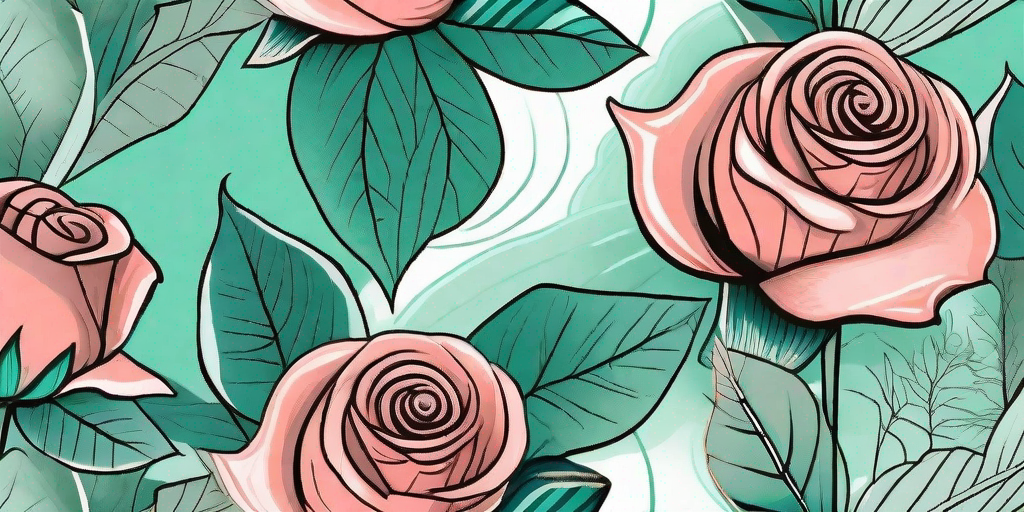
Roses are red, violets are blue, but what do you do when your roses are chewed through? Rose slugs, those cheeky little critters, have a knack for turning your beautiful garden into their personal buffet. But fear not, dear gardeners, for we have the ultimate solution to send these pesky pests packing.
Understanding the Enemy: What are Rose Slugs?
Before we dive into the nitty-gritty of rose slug combat, let's get to know our adversary a little better. Despite their name, rose slugs aren't actually slugs. They're the larvae of a type of sawfly, and they're as fond of roses as we are of a good garden party.
These tiny green caterpillars can cause significant damage to your roses, munching away at the leaves until they're left looking like Swiss cheese. Not exactly the look you were going for, we presume.
The Life Cycle of a Rose Slug
Understanding the life cycle of a rose slug can give you a leg up in the battle. These critters have one to two generations per year, with larvae appearing in late spring to early summer and again in late summer to early fall.
After feeding on your roses, the larvae drop to the ground to pupate in the soil. They emerge as adult sawflies, ready to lay eggs and start the cycle all over again. It's like a never-ending rose-munching party, and you're not invited.
Identifying Rose Slug Damage
So, how do you know if you're dealing with rose slugs? Well, these little rascals leave a distinctive calling card. They feed on the soft tissue of the leaves, leaving behind a skeleton of veins and a very unhappy rose bush.
Early detection is key to managing these pests. If you notice small, window-like holes in your rose leaves or a general thinning of the foliage, you might have a rose slug problem on your hands (or rather, on your roses).
Other Signs of Rose Slugs
Besides the tell-tale leaf damage, there are a few other signs that rose slugs have moved in. You might see the tiny green larvae themselves, or notice a shiny, slimy trail on the leaves (a bit like a slug trail, hence the name).
Also, if your roses seem less vigorous than usual, or if they're not blooming as well as they should be, it might be time to investigate for rose slugs.
The Ultimate Solution: How to Get Rid of Rose Slugs
Now, onto the good stuff. How do you evict these unwelcome guests from your garden? There are several methods you can use, from organic solutions to chemical treatments. Let's dig in, shall we?
Firstly, a simple and organic method is to manually remove the rose slugs. This can be time-consuming, but it's a safe and effective way to protect your roses. Just be sure to check your plants regularly, as new larvae can appear throughout the season.
Using Natural Predators
Mother Nature is a clever old gal, and she's provided us with some natural rose slug predators. Birds, beetles, and other insects can help keep the population in check. Encourage these helpful critters into your garden by providing habitats and avoiding the use of broad-spectrum pesticides.
Another natural solution is to use insecticidal soaps or horticultural oils. These can be sprayed directly onto the rose slugs to kill them. Just be sure to follow the instructions on the label, as these products can also harm beneficial insects if not used correctly.
Chemical Treatments
If the rose slug infestation is severe, you might need to bring out the big guns. Chemical pesticides can be effective, but they should be used as a last resort. Always choose a product that is specifically designed for rose slugs, and follow the manufacturer's instructions to the letter.
Remember, the goal is to protect your roses, not to wage chemical warfare on your entire garden. Use these products responsibly, and your roses will thank you.
Preventing Future Infestations
Once you've dealt with the current infestation, it's time to think about prevention. After all, an ounce of prevention is worth a pound of cure, especially when it comes to rose slugs.
Regularly inspect your roses for signs of damage, and remove any larvae you find. Keep the area around your roses clean and free of debris, as this can provide a hiding place for rose slugs. And consider using preventative treatments, such as insecticidal soaps or horticultural oils, during the times of year when rose slugs are most active.
Maintaining a Healthy Garden
A healthy garden is the best defense against pests. Keep your roses well-fed and watered, and they'll be better able to withstand a rose slug attack. And remember to encourage beneficial insects and birds into your garden. They're nature's pest control, and they work for free!
So there you have it, folks. With a little knowledge and some elbow grease, you can say goodbye to rose slugs and hello to a beautiful garden. Now, who's ready for that garden party?
FAQs
- What are rose slugs?
Rose slugs are the larvae of a type of sawfly. They feed on the leaves of rose bushes, causing significant damage.
- How can I get rid of rose slugs?
You can manually remove rose slugs, use natural predators, apply insecticidal soaps or horticultural oils, or use chemical pesticides as a last resort.
- How can I prevent rose slug infestations?
Regularly inspect your roses for signs of damage, keep the area clean, use preventative treatments, and maintain a healthy garden.















